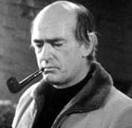WSR NewsCast
“If you look at these chairs, they are mainly made of air, like sculpture. Space passes right through them.”
-Harry Bertoia
Saade: “ I am here with Harry Bertoia”. The Artist, and The Philosopher, “Hello Art History class of Stevenson University my name is Saade J. Matthews I am a Visual Arts and Communication and Design student. I am joined here with Mr. Harry Bertoia,
“Did I pronounce that correct Mr. Bertoia?”
Harry Bertoia:
“Yes, you pronounced that corrected you have a nice autentico pronunciation.
Saade:
” Thank you so much!” I am used to speaking some French and Spanish but noone has ever said that I had a nice Italian accent before. “grazie mille”!
Saade:
” I spoke with your daughter, Lesta and son Val, this morning the two stated you were visiting back in your hometown of San Lorenzo, Friull Italy?…How are you today on this misty but beautiful morning?
“Harry Bertoia:”
I am great today, thank you very much, Saade!”.
Saade:
“Mr. Bertoia What professional background do you profess to be to the world”?
Harry Bertoia:
” Nice Question I profess to be a , Printmaker, Jeweler, furniture designer and Sculptor as well as Philosopher.”
Saade:
Mr. Bertoia that is a very inspirational to all artistic students Mr. Bertoia, ” How much strength in your design process did you build when Knoll introduced The Bertoia Diamond chair series in 1952?
Harry Bertoia:
I gained a lot of momentum and strength from when I introduced my first chair. I made sure all the live production was done for the Items. I remember setting up my shop in a old fume escaping and inhaling garage building.”
Saade:
Mr. Bertoia, I commend you on your work that you have done with the Diamond chair. Does it feel amazing to have several of your work chairs completed designs for Knolls?
Mr. Bertoia:
Yes, Miss. Matthews he compensated me very generously and my work was very popular and part of the ” modern” furniture movement. I was able to purchase my dream farmhouse I was renting to become a owner of a house!
Saade:
“Mr. Bertoia, I want to also congratulate you on your first architectural sculpture commission that you earned in 1953 for the Motors Technical Center, thanks to your fellow designer Cranbook pal Eero Saarinen. It made its debut placed on the altar in the Boston, Massachusetts Institute of Technology Chapel shortly after you earned your commission in 1953, that is a foreshadowing of amazing strength and perseverance.”
Saade:
“What do you think was one of your weakness from your successful lifestyle?”
Mr. Bertoia:
Saade, I think one of my weaknesses from my lifestyle was spending a lot of time around materials of beryllium copper and toxic fumes, I think that contributed to my lung cancer that will not expel out of my body.”
Saade:
“Mr Bertoia what do you think was a Opportunity that you had in your life to become so successful as a Printmaker, Jeweler, furniture Designer, Sculptor as well as Philosopher?”
Mr. Bertoia: ” That’s another great question, Saade, as a Italian born American. I came to the great United States of America searching for the American dream, where I can image my future and design my career like the motto that you use as a Wild Stang at Stevenson University. I wanted to live my dream to become a painter as well as design brides wedding day linen and embroidery patterns. I wanted to use my opportunity to gather scholarship money from The Art School of Detroit to enrich my paint and drawing skills to enter local art competitions. America was my place to grow! Home of the free land of brave souls.”
Saade:
“What was a threat that you encountered throughout your career as a sculptor, jeweler, and print maker designer”?
Mr. Bertoia:
“Saade, I encountered a threat of getting lung cancer, not spending time to maintain my chickens and cows and goats around my farm house. I also haven’t had time to teach other students, Negro or Caucasian the proper ascetics they need to have a better understanding on how to embroidery print and market themselves in America.”
Saade:
“Amazing statement Mr. Bertoia, it was a pleasure to meet you and speak to your daughter Lessa I know you were influenced by your mentors Florence Shust ( Knolls), Charles Eames and Eero Saarinen.Thank you for doing a news-broadcast for the WildStang radio here at Stevenson University Grazie Mille! Very nice to meet you, the artist and philosopher Harry Bertoia.”
Mr. Bertoia:
“ Nice to meet you as well, lovely lady Saade, best wishes to you young astute, successful lad”.
1.) http://www.dwr.com/category/designers/a-c/harry-bertoia.do last accessed: March 27, 2014
2.)http://www.bertoia-harry.com/ last accessed: March 27, 2014
3.)http://www.1stdibs.com/creators/harry-bertoia/furniture/ last accessed: March 27,2014
4.)http://www.skinnerinc.com/news/blog/harry-bertoia-sculpture-mit-chapel-in-miniature/ last accessed: March 27, 2014
5.)http://www.wright20.com/exhibitions/2014/1/harry-bertoia-sculpture: last accessed March 27, 2014
6.)http://www.memado.com/en/30_harry-bertoia last accessed:March 28, 2014
7.)http://www.dkgallery.com/artists/163/Harry-Bertoia last accessed: March 28, 2014
8.)http://www.retrostart.com/designer/harry-bertoia/ last accessed:March 28, 2014
9.)http://www.nest.co.uk/browse/designer/harry-bertoia last accessed: March 29, 2014
10.)http://www.r20thcentury.com/biography_detail.cfm?designer_id=47 last accessed: March 29,2014
11.) http://www.dwr.com/category/designers/a-c/harry-bertoia.do last accessed: March 27, 2014
12.)http://www.bertoia-harry.com/last accessed: March 27, 2014
13.)http://www.1stdibs.com/creators/harry-bertoia/furniture/ last accessed: March 27,2014
14.)http://www.skinnerinc.com/news/blog/harry-bertoia-sculpture-mit-chapel-in-miniature/ last accessed: March 27, 2014
15.)http://www.wright20.com/exhibitions/2014/1/harry-bertoia-sculpture: last accessed March 27, 2014
16.)http://www.memado.com/en/30_harry-bertoia last accessed:March 28, 2014
17.)http://www.dkgallery.com/artists/163/Harry-Bertoia last accessed: March 28, 2014
18.)http://www.retrostart.com/designer/harry-bertoia/ last accessed:March 28, 2014
19.)http://www.nest.co.uk/browse/designer/harry-bertoia last accessed: March 29, 2014
20.)http://www.r20thcentury.com/biography_detail.cfm?designer_id=47 last accessed: March 29,2014
21.)http://www.infurn.com/us/harry-bertoia last accessed March 29,2014
22.)http://www.design-museum.de/en/collection/100-masterpieces/detailseiten/diamond-chair-bertoia.html last accessed. March 29,2014














